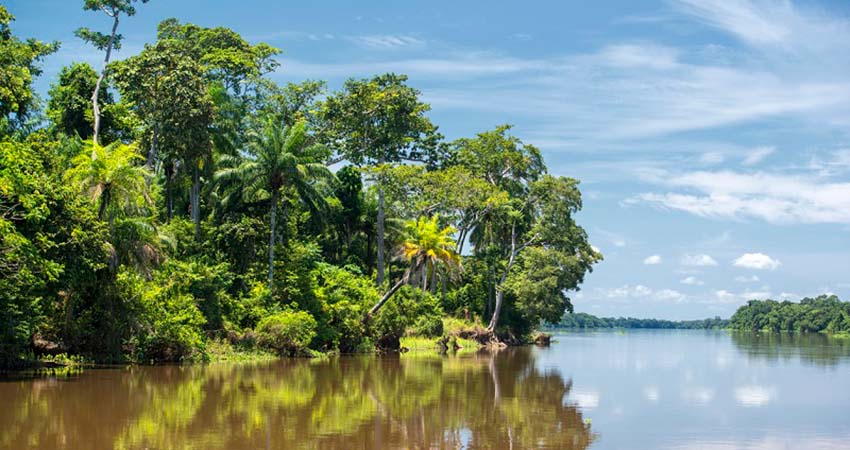Published:

Mud samples from the Congo River Deep Sea Fan have given scientists a 2.5 million year timeline of methane production and emission from wetland areas in central Africa.
The scientists involved say the work is a “first and essential step” to trace the history of methane fluctuations of tropical Africa from deep in the geological past, from when direct methane measurements are not possible.
Methane is a greenhouse gas that is 14-times stronger than carbon dioxide. Once released it has instantaneous, high-impact effects on the environment.
The tropics store large volumes of methane, mainly in vast wetland environments. Despite this, significantly less research has been done in the tropics compared to its counterpart, the Arctic.
Professor Tom Wagner from the Lyell Centre at Heriot-Watt University and colleagues from the University of York and Durham have examined hundreds of samples of deep-sea sediment from Congo River deep-sea cores, supported by the Natural Environment Research Council (NERC) and the European Research Council (ERC).
Now, for the first time, it is possible to track how tropical wetlands in central Africa expanded and contracted as global climate fluctuated over the last 2.5 million years. The evidence links the dynamic history of precipitation, ecosystem development, and river runoff in the continental interior of Africa with deep ocean sediments.
Professor Wagner said: “Tropical wetlands are unique and highly valuable ecosystems that host microbes that produce vast amounts of methane.
“As the central African wetland environments have changed and reshaped over the past 2.5 million years, with periods of dryer climate and contracted wetlands alternating with humid phases with extended wetlands, microbial activity was directly affected.
“The molecular remains of these microbes were mobilised as 'biomarkers' and washed out, along with other minerals and nutrients, by the Congo River into the open ocean, where they were finally preserved in deep sea mud, hundreds if not thousands of miles away.”
Dr Helen Talbot, University of York, said: “Methane is a very important greenhouse gas and we need to understand it better in order to create more accurate global methane budgets.”
Dr Charlotte Spencer-Jones, a research associate at Durham University, said: “We took samples from one core from the Congo deep-sea fan, recovered by the International Ocean Discovery Program (IODP), and analysed them to trace the diagnostic biomarkers for aerobic turnover of methane.
“We linked changes in the concentration of these biomarkers with well-known climate cycles of the past few million years, and this resulted in a new, geological perspective on tropical methane cycling.”
Professor Wagner is hopeful the methodology can be exported to other parts of the globe, for a more complete picture of methane over the millennia. Professor Wagner said: “This research opens new opportunities for integrated research, with a focus on the methane cycle as a key driver of climate and environmental change.
“The next steps will be to test and further refine the new biomarker approach in other settings, all the way up to polar regions, constrain how far back in geological time it can be applied, and develop models so that we have a better understanding of how methane budgets have changed in the past and will develop into the future.”
Researchers across Heriot-Watt's global campuses are focused on Year of the Sea 2018, a calendar of engagement that will span schools, the public, academia, industry collaborators, funders and policy makers.
Keep up-to-date with Year of the Sea on Twitter @HWU_Seas, look for us across all channels using #yearofsea2018, and visit www.hw.ac.uk/yearofthesea.